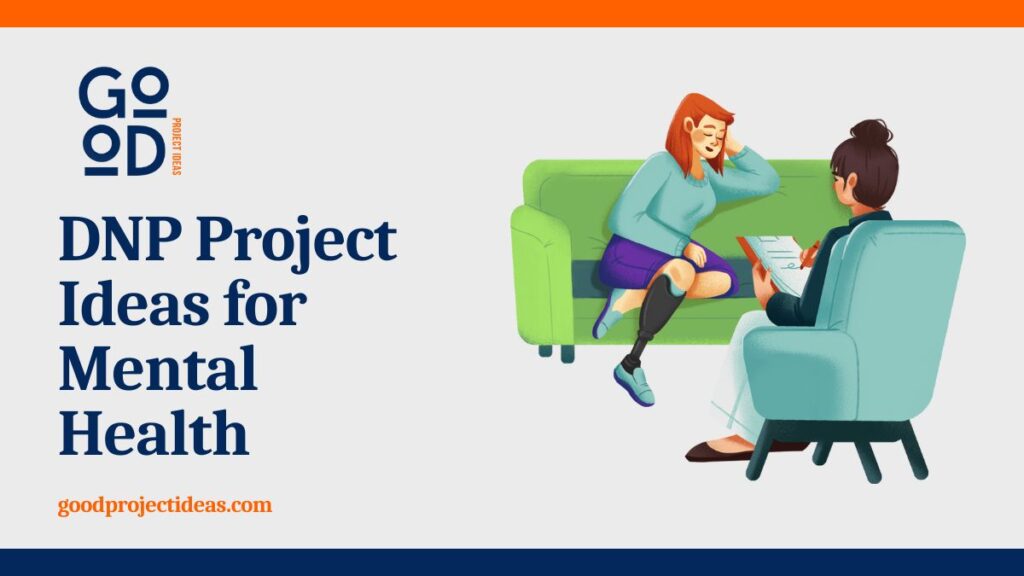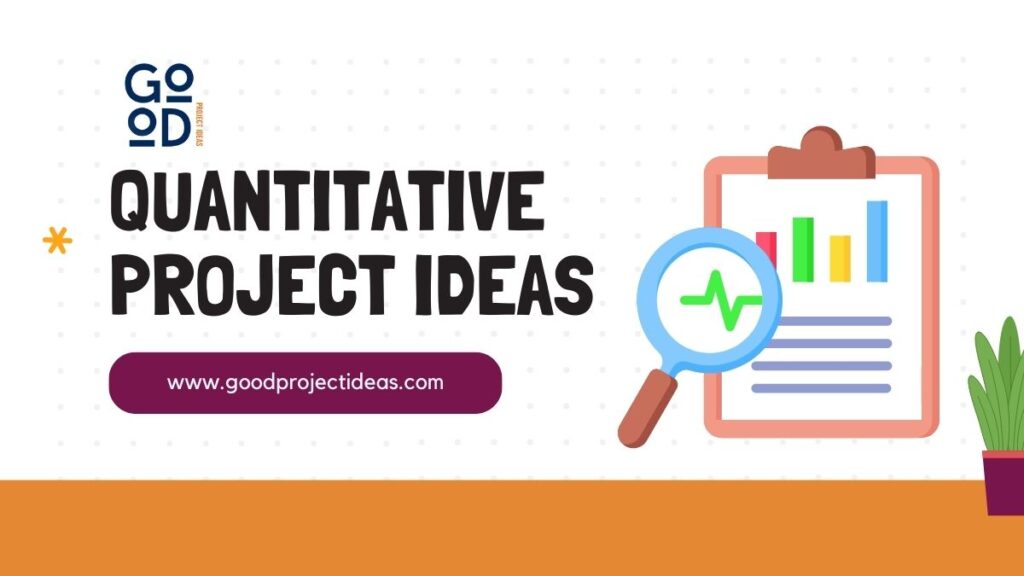Discover exciting DNP project ideas for mental health that bring innovative solutions to the table. From community interventions to cutting-edge technologies, nursing experts have crafted strategies to address mental health challenges and promote holistic well-being.
In the dynamic world of healthcare, where every element plays a vital role, Doctor of Nursing Practice (DNP) professionals shine, especially in navigating mental health complexities.
Get ready for an adventure beyond the ordinary. These projects aren’t just tasks; they’re opportunities to spark ideas that could revolutionize how we approach mental health care.
Unveiling the World of DNP Projects
DNP projects aren’t your conventional research endeavors. Picture them as the playground where nursing professionals don’t merely theorize but plunge into practical, evidence-backed solutions for genuine healthcare challenges.
As we step into the mental health arena, these projects aren’t just beacons of hope; they embody a commitment to tangible change in how we understand and approach mental health care.
Significance of Mental Health Focus
Mental health is getting a lot of attention these days, and that’s a good thing. Here’s why it matters:
Feeling good
Mental health is super important for how we feel every day. When our mental health is good, we can:
- Handle stress better.
- Have closer relationships.
- Make smarter choices.
- Live a happier life.
Less illness
Mental health issues are common and affect many people worldwide. Paying attention to mental health can:
- Prevent problems from starting.
- Find and treat issues early.
- Reduce the overall impact of mental illness on people and healthcare systems.
Doing better in life
Ignoring mental health can affect our work, school, and friendships. But focusing on mental health can lead to:
- Doing better at work and school.
- Having better friendships and connections.
- Missing less work or school because we feel better.
Helping society
When people are mentally healthy, they can contribute more to their communities. This means:
- A stronger workforce.
- A more vibrant society.
- Less pressure on social services.
A basic right
The World Health Organization (WHO) says mental health is a basic human right. So, paying more attention to mental health means everyone gets the support and resources they need to feel mentally good.
In essence, caring about mental health is crucial for feeling good, staying healthy, building a happy society, and making sure everyone gets the support they need.
DNP Project Ideas for Mental Health
Check out DNP project ideas for mental health:-
Prevention and Early Intervention
- Implementing mental health screenings in schools.
- Creating suicide prevention programs for college students.
- Developing mental health education for parents.
- Reducing stigma through community programs.
- Evaluating workplace stress reduction programs.
Access to Care
- Establishing telepsychiatry for rural areas.
- Mobile mental health clinics for underserved.
- Improving mental health services for veterans.
- Support networks for caregivers.
- Impact of insurance on access to care.
Integration into Primary Care
- Depression screening in primary care.
- Collaborative care models.
- Integrating mental health into physical exams.
- Training primary care providers.
- Effectiveness of integrated care.
Mental Health Promotion
- Campaigns for college student mental health.
- Workplace wellness for mental health.
- Community programs for older adults.
- Peer support for mental illness.
- Impact of exercise on mental health.
Treatment and Recovery
- Medication adherence programs.
- Support for transitioning from inpatient care.
- Group therapy for adolescents.
- Reducing seclusion and restraint.
- Effectiveness of art therapy.
Special Populations
- LGBTQ+ youth mental health programs.
- Culturally tailored programs for immigrants.
- Mental health programs for homeless.
- Support for individuals with disabilities.
- Evaluating mental health services for incarcerated.
Technology and Mental Health
- Mobile apps for mood tracking.
- Virtual reality therapy for anxiety.
- Online support groups for depression.
- Telemedicine for remote areas.
- Effectiveness of digital interventions.
Policy and Advocacy
- Advocacy for mental health funding.
- Policies to reduce stigma.
- Mental health awareness campaigns.
- Training community leaders.
- Impact of mental health policies.
Mental Health in Schools
- Mental health curriculum for schools.
- Teacher training on recognizing signs.
- Peer counseling programs.
- Interventions for reducing bullying.
- Effectiveness of school-based services.
Workplace Mental Health
- Employee assistance programs.
- Stress management for healthcare workers.
- Manager training for support.
- Workplace mental health policies.
- Impact on productivity.
Mental Health in Older Adults
- Depression screening in nursing homes.
- Programs to reduce social isolation.
- Education for caregivers.
- Group therapy for dementia.
- Effectiveness of reminiscence therapy.
Mental Health in Military and Veterans
- Transition programs for veterans.
- PTSD screening in military.
- Peer support for veterans.
- Substance abuse programs.
- Effectiveness of mental health services.
Mental Health and Substance Abuse
- Dual diagnosis programs.
- Reducing stigma around seeking help.
- Relapse prevention programs.
- Harm reduction for addiction.
- Integrated treatment for co-occurring disorders.
Mental Health and Chronic Illness
- Mental health programs for chronic pain.
- Support for individuals with diabetes.
- Mindfulness programs for chronic illness.
- Addressing mental health in cancer.
- Impact of chronic illness on mental health.
Mental Health and Trauma
- Trauma-informed care programs.
- Support for refugees.
- Therapy for sexual assault survivors.
- Addressing childhood trauma.
- Effectiveness of trauma interventions.
Mental Health and Homelessness
- Outreach programs for homeless.
- Housing-first approaches.
- Substance abuse programs for homeless.
- Peer support for homeless.
- Impact of stable housing.
Mental Health and LGBTQ+ Communities
- Mental health programs for LGBTQ+ youth.
- Reducing mental health disparities.
- Support groups for LGBTQ+.
- Provider training on LGBTQ+.
- Effectiveness of LGBTQ+ affirming services.
Mental Health and Racial/Ethnic Minorities
- Mental health programs for minorities.
- Reducing disparities in underserved.
- Culturally tailored curriculum.
- Addressing racism-related stress.
- Effectiveness of culturally competent services.
Mental Health and Disability
- Programs for individuals with disabilities.
- Mental health in physical disabilities.
- Caregiver training.
- Reducing stigma in disability.
- Effectiveness of interventions.
Mental Health and Technology
- Telepsychiatry for limited access.
- Mobile apps for self-management.
- Virtual reality therapy.
- Online peer support.
- Effectiveness of digital interventions.
Mental Health and Aging
- Screening in assisted living.
- Reducing social isolation.
- Mindfulness for anxiety.
- Addressing depression.
- Effectiveness in older adults.
Mental Health and Children/Adolescents
- School-based mental health.
- Bullying prevention.
- Anxiety programs for adolescents.
- Parenting programs for ADHD.
- Effectiveness in school settings.
Mental Health and Families
- Family therapy for mental illness.
- Support for families in inpatient care.
- Addressing addiction in families.
- Improving family communication.
- Impact of family dynamics.
Mental Health and Criminal Justice System
- Screening in criminal justice.
- Diversion programs for mental illness.
- Addressing trauma in incarceration.
- Reentry programs.
- Effectiveness in correctional facilities.
Mental Health and Healthcare Settings
- Screening in primary care.
- Addressing burnout in providers.
- Peer support for healthcare workers.
- Improving communication.
- Effectiveness in healthcare settings.
Mental Health and Community Settings
- Mental health clinics in communities.
- Programs for homeless in shelters.
- Reducing stigma in communities.
- Support after disasters.
- Impact of community services.
Mental Health and Policy
- Funding for mental health services.
- Policies to reduce stigma.
- Improving access.
- Advocacy campaigns.
- Impact of policies.
Mental Health and Work/School
- Support programs in workplaces.
- Education in schools.
- Stress reduction for students.
- Awareness campaigns.
- Effectiveness in work or school.
Mental Health and Technology
- Mobile apps for self-management.
- Telepsychiatry for remote areas.
- Online platforms for support.
- Virtual reality therapy.
- Effectiveness of digital interventions.
Mental Health and Special Populations
- Programs for refugees.
- Mental health in LGBTQ+.
- Support for veterans.
- Mental health in disabilities.
- Effectiveness in special populations.
Mental Health and Wellness
- Wellness programs for promotion.
- Mindfulness for stress reduction.
- Improving sleep hygiene.
- Promoting physical activity.
- Impact of lifestyle changes.
Mental Health and Crisis Intervention
- Crisis intervention programs.
- De-escalation techniques.
- Support after trauma.
- Mental health first aid training.
- Effectiveness of crisis programs.
Mental Health and Community Support
- Peer support programs.
- Community-based services.
- Promoting social connections.
- Community outreach.
- Impact of support networks.
Mental Health and Health Promotion
- Promotion campaigns.
- Education in schools.
- Body image promotion.
- Reducing substance abuse.
- Impact of health promotion.
Mental Health and Mindfulness
- Mindfulness programs.
- Meditation in schools.
- Training in workplaces.
- Therapy for disorders.
- Impact of mindfulness.
Mental Health and Resilience
- Resilience-building programs.
- Training in schools.
- Promotion in communities.
- Building resilience in military.
- Impact of resilience programs.
Mental Health and Self-Care
- Self-care programs.
- Support for healthcare workers.
- Self-care for chronic illness.
- Caregiver self-care.
- Impact of self-care.
Mental Health and Emotional Intelligence
- Emotional intelligence programs.
- Training in schools.
- Emotional intelligence in workplaces.
- Training for providers.
- Impact of emotional intelligence.
Mental Health and Coping Skills
- Coping skills programs.
- Programs for adolescents.
- Coping with trauma.
- Coping with chronic illness.
- Impact of coping skills.
Mental Health and Social Support
- Building support networks.
- Support in schools.
- Promoting social connections.
- Support for mental illness.
- Impact of social support.
These ideas can inspire innovative DNP projects that address mental health needs across various populations and settings.
What is the projection for a psychiatric nurse practitioner?
Hold onto your stethoscopes because the gig for psychiatric nurse practitioners (PNPs) is set to explode! Picture this: the Bureau of Labor Statistics (BLS) is rolling the dice on a jaw-dropping 52% growth in nurse practitioner gigs from 2020 to 2030.
That’s not just beating the average for all jobs (a measly 8%), it’s leaving it in the dust. PNPs, you’re the rockstars of the healthcare scene, and the demand is reaching new heights!
Why the PNP party? Blame it on the times. An older crowd is bringing a wave of chronic health conditions, and guess who’s in the spotlight? Mental health. Add a pinch of awareness about mental well-being and sprinkle in a shortage of mental health wizards—boom, demand goes through the roof.
Now, who are these PNPs? They’re the superheroes of advanced practice registered nurses (APRNs), armed with laser-focused training in cracking the mental health code. They’re not just diagnosing and treating; they’re prescribing meds, dishing out therapy, and schooling patients and families on the mental health 411. They’re basically the Avengers of the mental health world.
And where can you spot these mental health Avengers in action? Everywhere! Hospitals, clinics, private practices—they’re the unsung heroes working behind the scenes to make mental health care as cool as a Marvel movie.
Now, let’s talk cash. The median annual wage for nurse practitioners in May 2020 was a sweet $112,630. Top earners? Counting stacks with more than $208,000. Even the newcomers to the scene were pocketing a cool $53,290.
But hold up, the good news keeps coming. The job outlook for PNPs is not just good; it’s sizzling. The BLS is throwing some serious numbers at us, projecting an average of 29,400 new PNP job openings each year from 2020 to 2030. That’s not a trickle; that’s a job waterfall.
In a nutshell, PNPs, your future is looking like a blockbuster movie—full of action, high demand, and making a real impact where it counts. So, grab your capes and stethoscopes, the PNP party is just getting started!
Conclusion
These DNP projects aim to make mental health care better. They want to prevent problems, make it easier to get help, and include mental health in regular health care. They also focus on helping people feel better and improving how we treat and recover from mental health issues.
These projects also focus on specific groups like veterans, people with disabilities, and LGBTQ+ individuals. They use new technology and new ideas to improve mental health care.
By working on these projects, DNP students can really make mental health care better. This helps everyone stay healthier and happier.
Meet Tom Latham from Good Project Ideas! He’s passionate about sparking creativity and making learning fun for all. Tom loves crafting engaging projects that inspire curiosity and hands-on exploration. Join him in bringing ideas to life!



